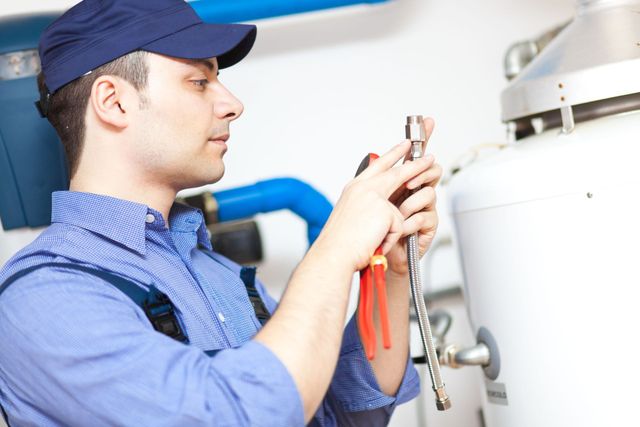Making Sure Longevity of Your Home's Hot Water System: Care Advice
Making Sure Longevity of Your Home's Hot Water System: Care Advice
Blog Article
They are making a few great pointers on How to Maintain a Hot Water Heater in a Few Simple Steps as a whole in this great article following next.

Warm water is important for daily comfort, whether it's for a revitalizing shower or washing recipes. To ensure your hot water system runs successfully and lasts longer, normal upkeep is vital. This short article gives useful pointers and insights on just how to maintain your home's warm water system to prevent disturbances and expensive repairs.
Intro
Maintaining your home's warm water system might seem challenging, yet with a few easy actions, you can ensure it runs smoothly for years to find. This guide covers every little thing from understanding your hot water system to do it yourself maintenance suggestions and recognizing when to hire expert aid.
Importance of Maintaining Your Warm Water System
Regular upkeep not only extends the life expectancy of your warm water system yet additionally guarantees it operates successfully. Neglecting maintenance can result in reduced effectiveness, greater power costs, and even premature failure of the system.
Indications Your Warm Water System Demands Maintenance
Knowing when your hot water system requires focus can protect against major issues. Look out for signs such as inconsistent water temperature, weird sounds from the heating system, or rusty water.
Purging the Hot Water Heater
Purging your hot water heater gets rid of debris build-up, boosting performance and prolonging its life.
Checking and Replacing Anode Rods
Anode rods avoid deterioration inside the tank. Examining and replacing them when worn out is essential.
Complex Issues Calling For Specialist Assistance
Examples consist of major leaks, electrical problems, or if your water heater is constantly underperforming.
Regular Expert Upkeep Perks
Specialist upkeep can consist of complete assessments, tune-ups, and making sure conformity with security criteria.
Checking and Adjusting Temperature Settings
Adjusting the temperature setups ensures optimal efficiency and security.
Do It Yourself Tips for Upkeep
You can execute numerous upkeep jobs on your own to keep your warm water system in top condition.
Looking for Leakages
Routinely inspect pipes and connections for leakages, as these can lead to water damages and greater costs.
Recognizing Your Hot Water System
Prior to diving into upkeep tasks, it's useful to recognize the fundamental components of your warm water system. Usually, this includes the water heater itself, pipelines, anode rods, and temperature level controls.
Monthly Maintenance Tasks
Normal regular monthly checks can help capture minor concerns before they rise.
Testing Stress Alleviation Valves
Evaluating the pressure safety valve ensures it works correctly and stops excessive pressure build-up.
Insulating Pipes
Protecting warm water pipes decreases warmth loss and can save energy.
When to Call a Specialist
While DIY upkeep is beneficial, some problems call for professional know-how.
Conclusion
Routine maintenance of your home's hot water system is essential for effectiveness, long life, and price financial savings. By following these suggestions and understanding when to seek specialist assistance, you can make certain a reputable supply of hot water without unexpected interruptions.
How to Maintain an Instant Hot Water Heater
Before tinkering with your hot water heater, make sure that it’s not powered on. You also have to turn off the main circuit breaker and shut off the main gas line to prevent accidents. Also turn off the water valves connected to your unit to prevent water from flowing into and out of the appliance. 2. When you’re done, you have to detach the purge valves’ caps. These look like the letter “T†and are situated on either side of the water valves. Doing so will release any pressure that has accumulated inside the valves while at the same time avoid hot water from shooting out and burning your skin. 3. When the purge valves’ caps are removed, you have to connect your hosing lines to the valves. Your unit should have come with three hoses but if it didn’t, you can purchase these things from any hardware or home repair shops. You can also get them from retail stores that sell water heating systems. Read the user’s manual and follow it to complete this task properly. When the hosing lines are connected, open the purge port’s valves. 4. You should never use harsh chemical cleaners or solutions when cleaning your unit. Make use of white vinegar instead. It should be undiluted and you’ll probably use about 2 gallons. 5. Now flush your water heater. This task should probably take about 40 minutes. We can’t give you specific directions for this because the procedure is carried out depending on the type, model and brand of your heater. With that being said, refer to the user’s manual. 6. When you’re done draining the unit, you have to turn off the purge port valves again. Remove the hosing lines that you earlier installed on each of the water valves. Put the valve caps (purge port) back in their respective places and be very careful so as not to damage the rubber discs that are found inside these caps. 7. Now that everything’s back in place, check your user’s manual again to find out how to reactivate your water heating system. 8. Once it is working, turn one of your hot water faucets on just to let air pass through the heater’s water supply pipes. Leave the tap on until water flows smoothly out of it. https://www.orrplumbing.com/blog/2014/september/how-to-maintain-an-instant-hot-water-heater/

I found that piece on Tips on Maintaining a Water Heater while doing a search on the web. Sharing is good. Helping others is fun. Kudos for your time. Kindly check up our blog back soon.
Book-Now Report this page